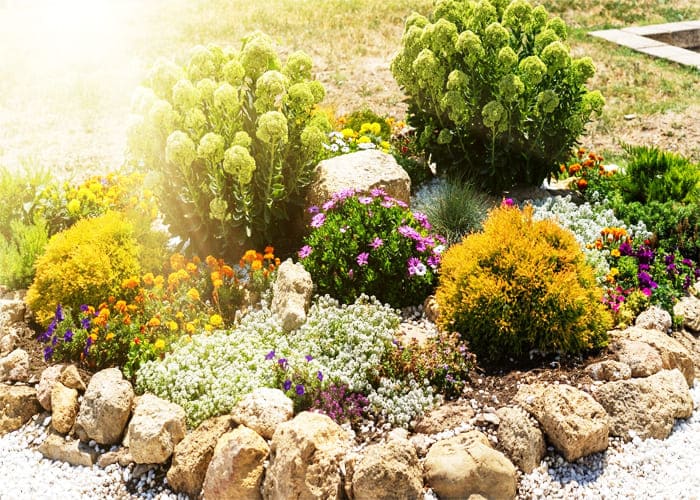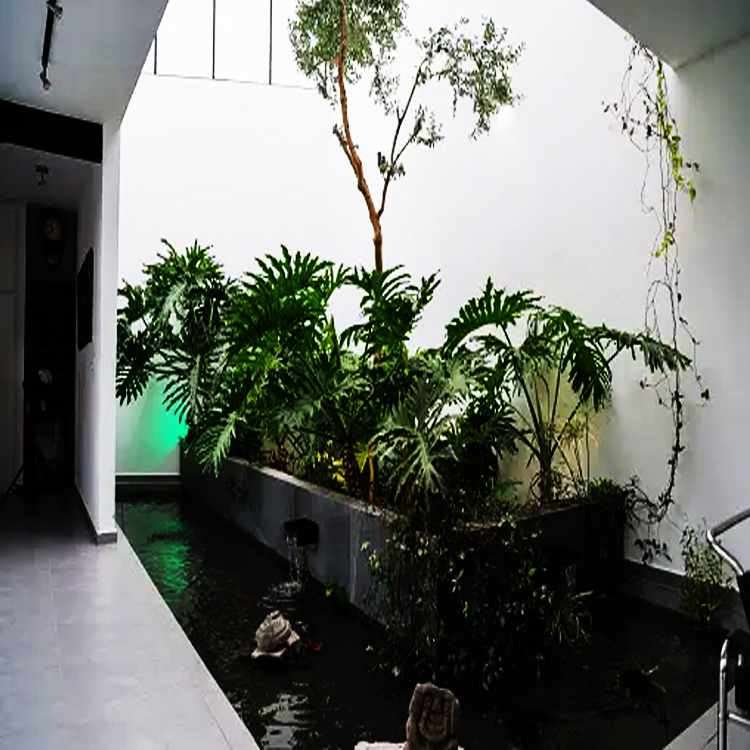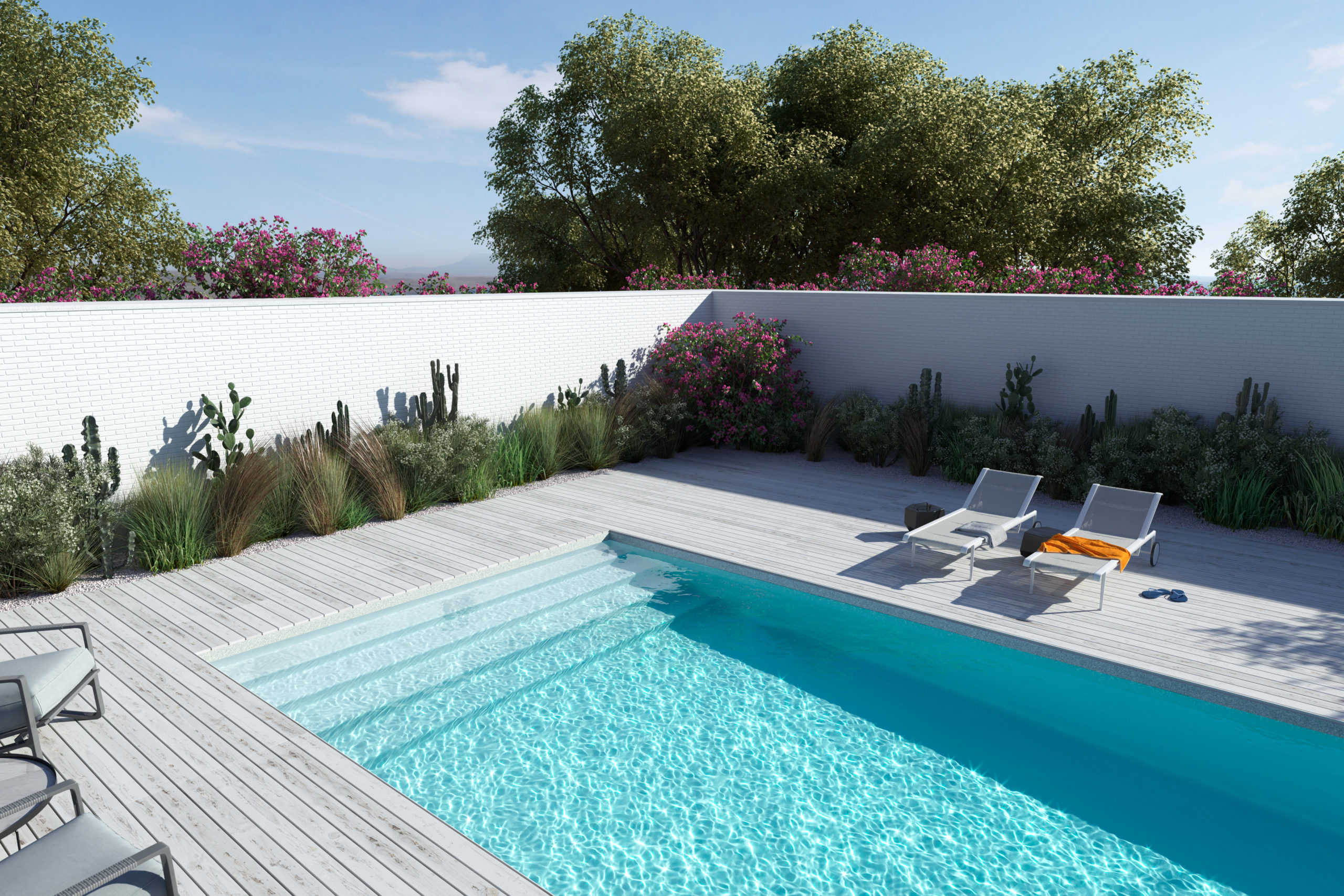In an era where environmental sustainability is becoming increasingly important, xeriscape gardens have emerged as a brilliant solution to create beautiful and water-efficient landscapes. The word “xeriscape” comes from the Greek “xeros” meaning dry, and “scape” meaning view. This concept was developed in Colorado, United States in 1981 as a response to drought. Since then, the popularity of xeriscape gardens has continued to increase in various parts of the world, including Indonesia which has a long dry season in some areas.

Xeriscape gardens are not just about planting cacti and rocks. Instead, it is a holistic approach to designing a garden that is not only beautiful to look at, but also efficient in water use and easy to maintain. In this article, we will discuss in depth about how to create a beautiful xeriscape garden, from planning to long-term maintenance.
1. Designing and Planning a Xeriscape Garden
Careful planning is the key to success in creating a xeriscape garden. Start by analyzing your land, including topography, soil type, and sunlight patterns. Also consider factors such as wind, drainage, and existing architectural features.
In the design phase, divide your garden into zones based on water needs. The zone closest to the house will usually have higher water needs, while the zone farther away can use more drought-tolerant plants. Also, consider creating a focal point or special area that will be the center of attention in your garden. Use landscape design software or even a hand sketch to visualize your plan. This will help you see the big picture and make adjustments before you start digging.
2. Soil Assessment and Preparation
Healthy soil is the foundation of a successful xeriscape garden. Start by having your soil analyzed to determine its pH and nutrient content. Many local agricultural labs offer this service for a small fee. Based on the results of the analysis, make any necessary soil amendments. The ideal soil for a xeriscape garden is one that is rich in organic matter and drains well. If your soil is too clayey or sandy, add compost or other organic matter to improve its structure and water-holding ability.
Also, pay attention to the contour of your land. A good xeriscape garden takes advantage of the natural topography to optimize water flow. Consider creating shallow depressions around plants to catch rainwater, or creating undulating contours to direct water flow to areas where it is needed.
3. Choosing the Right Plants
Plant selection is a crucial aspect in creating a beautiful and efficient xeriscape garden. Focus on native plants and plants that have adapted to the local climate. These plants are usually more resistant to local pests and diseases, and require less water and maintenance.
Some examples of plants that are suitable for xeriscape gardens in Indonesia include:
- Bougainvillea (Bougainvillea spectabilis)
- Hibiscus (Hibiscus rosa-sinensis)
- Allamanda (Allamanda cathartica)
- Cycas revoluta
- Various types of cacti and succulents
- Mini Elephant Grass (Pennisetum purpureum)
- Mother-in-law’s Tongue (Sansevieria trifasciata)
- Croton (Codiaeum variegatum)
When choosing plants, also consider light requirements, maximum height, and flower or leaf color to create a visually appealing composition.
4. Use Grass Efficiently
Traditional grass is often the biggest water consumer in a garden. In a xeriscape garden, grassy areas are minimized and replaced with more water-efficient alternatives. However, this doesn’t mean you have to eliminate grass altogether.
Consider using drought-tolerant grasses such as Mini Elephant Grass or Manila Grass (Zoysia matrella). Limit grassy areas to areas that really need it, such as children’s play areas or family recreation areas. As an alternative to grass, you can use groundcovers such as Portulaca grandiflora or Lantana camara, which are more drought-tolerant but still provide a lush, green impression.
5. Effective Irrigation
An efficient irrigation system is an essential component of a xeriscape garden. While the goal is to conserve water, plants still need water to survive and thrive, especially when first established. Drip irrigation is the best option for xeriscape gardens. This system delivers water directly to the roots of the plants, reducing evaporation and ensuring every drop of water is used efficiently. You may also want to consider using porous pipes placed under mulch.
For larger areas, low-angle sprinklers are an option. Make sure to water either in the morning or evening to minimize evaporation. Also, remember to equip your irrigation system with a rain sensor. This will prevent unnecessary watering during rain, saving water and preventing overwatering of your plants.
6. Mulching
Mulch is a key element in xeriscape gardens. In addition to adding aesthetics, mulch also helps to maintain soil moisture, reduce weed growth, and regulate soil temperature. For xeriscape gardens, choose organic mulches such as wood chips, bark, or dried leaves. Organic mulch will slowly decompose, adding nutrients to the soil. Alternatively, inorganic mulches such as gravel or rocks provide a more permanent look and are suitable for desert plants such as cacti and succulents.
Apply 2-4 inches (5-10 cm) of mulch around the plants, but keep it about 2 inches (5 cm) away from the stems of the plants to prevent rot. Renew the organic mulch annually or when it starts to run low.
7. Proper Care
While xeriscape gardens are designed to be low-maintenance, they are not meant to be completely maintenance-free. Proper care will ensure your garden stays healthy and beautiful all year round.
Some xeriscape garden care tips:
1. Regular pruning: Trim plants regularly to maintain shape and encourage healthy growth.
2. Weed control: Pull weeds by hand or use mulch to suppress their growth.
3. Fertilizing: Use a low-dose organic fertilizer. Xeriscape gardens generally require less fertilizer than traditional gardens.
4. Monitor plant health: Check plants regularly for signs of pests or disease. Address problems promptly to prevent them from spreading.
5. Irrigation adjustments: Adjust your watering schedule based on the season and rainfall.
Incorporating Hardscape Elements into a Xeriscape Garden
In addition to plants, hardscape elements like rocks, gravel, and man-made structures can add dimension and beauty to your xeriscape garden. Here are some ideas for incorporating hardscape:
1. Walkways: Create walkways with natural stone or paving that allow water to soak into the soil.
2. Stone walls: Low stone walls can be an eye-catching element while also helping to create a microclimate for plants.
3. Pergolas: These structures can provide shade while supporting drought-tolerant vines.
4. Water features: While it may seem counterintuitive, small-scale water features like stone fountains can add a cool feel without wasting water.
5. Seating areas: Create a relaxing area using weather-resistant materials like stone or hardwood.
Creating a beautiful xeriscape garden is not only a sustainable choice but also an opportunity to design a landscape that thrives with minimal water and maintenance. By carefully planning, selecting the right plants, and incorporating efficient irrigation and mulching techniques, you can achieve a garden that is both aesthetically pleasing and environmentally responsible. Embrace the beauty of drought-tolerant plants and hardscape elements to create a unique, low-water oasis.
As climate conditions continue to change, xeriscape gardening offers a proactive approach to gardening that aligns with the need for conservation and adaptability. With thoughtful design and ongoing care, your xeriscape garden can flourish, providing a vibrant and resilient landscape that enhances your outdoor space while conserving precious resources. Enjoy the satisfaction of a garden that reflects both your creativity and commitment to sustainability.



